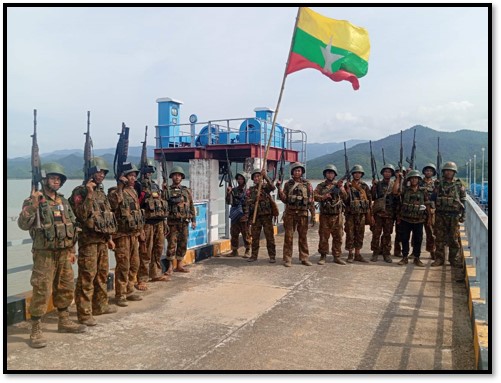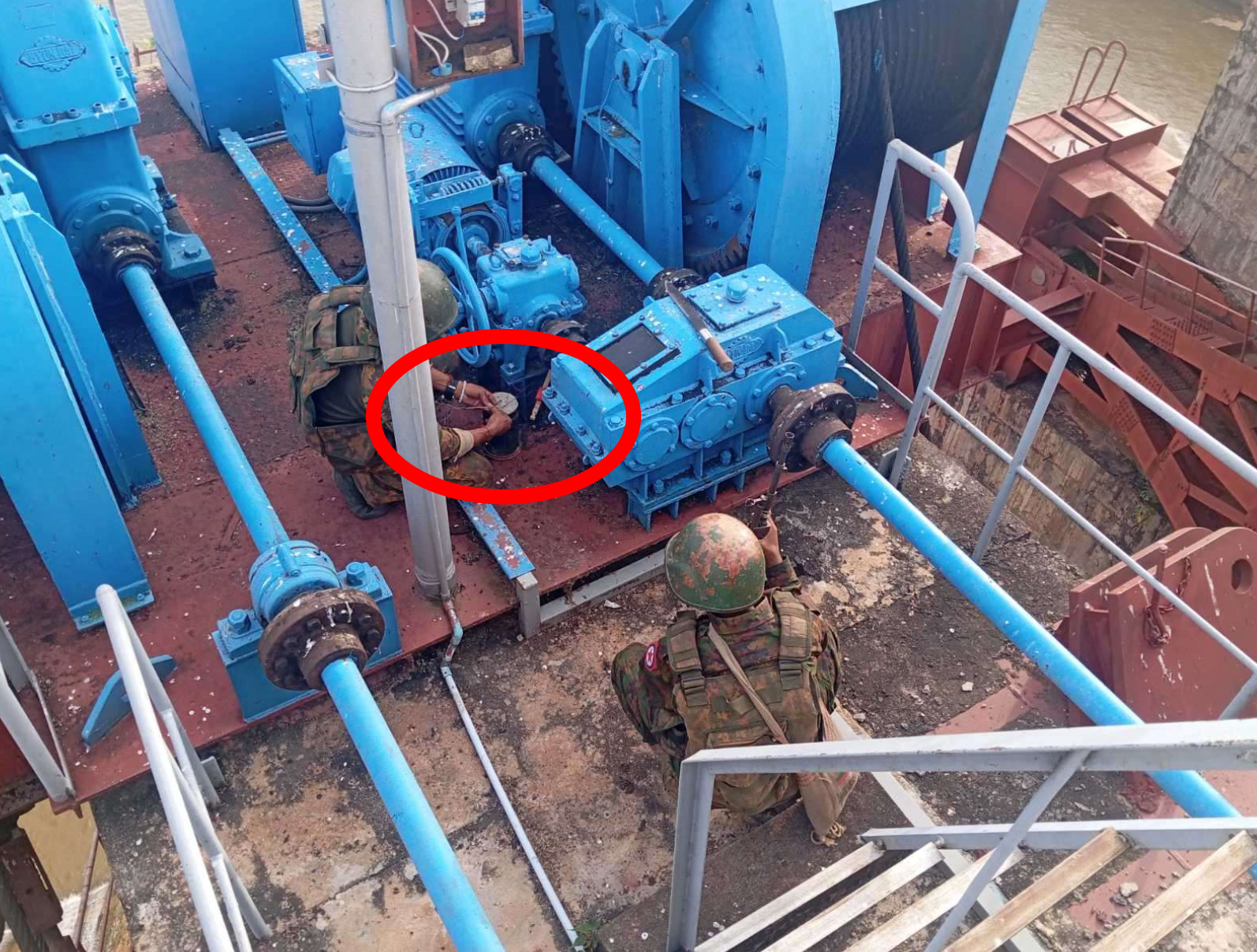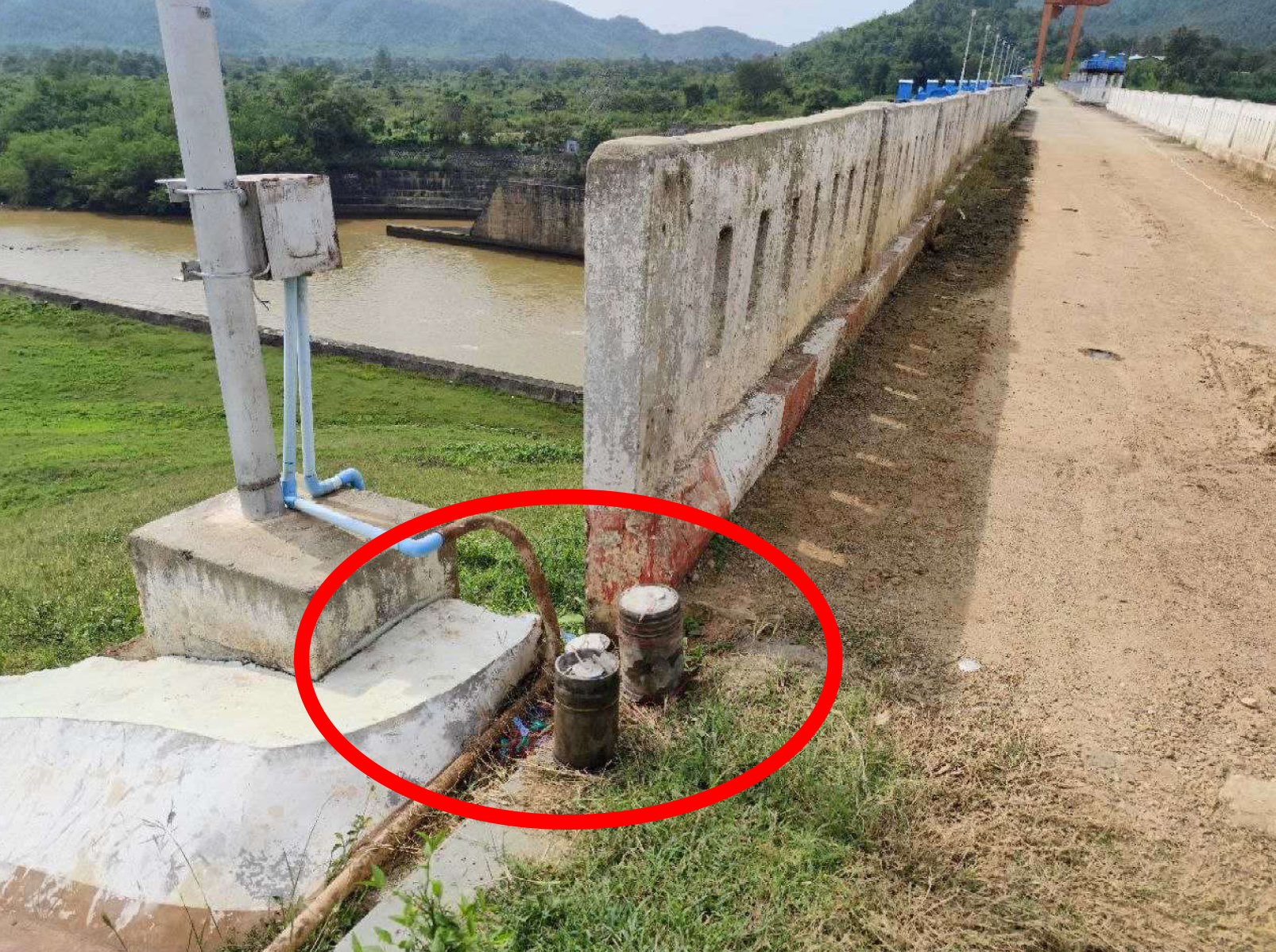The CRPH, NUG and their subordinates PDF terrorists intentionally launched destructive actions across the nation to destroy the governance mechanism and development of the country. They also attacked the outposts of the security forces with excessive force, using the locals as human shields. Therefore, the security forces systematically retreated to ensure the least damage to houses, factories and workshops of the country. Meanwhile, the terrorists temporarily controlled the military base, the Setawgyi dam, the Alpha cement factory and the Phayaung Taung mining site, including Setawgyi village in Madaya township of Mandalay Region.
The security forces systematically drafted the strategies step by step to regain these areas, and reoccupied Phayaung Taung mining site on 24 August and Alpha cement factory on 28 August, and the terrorists faced huge casualties and retreated to the northern part of Madaya.
Moreover, Tatmadaw columns launched systematic counter terrorism operations starting from 20 October with five battle axes. Although the terrorists attacked back, the systematic strategies and perseverance of military officials brought back success in reoccupying the Setawgyi dam and base and its vicinity area on 7 November.
During the 19-day operation, there were 42 clashes and armed engagements, and 14 dead bodies of terrorists, 60 arms and ammunition, and other materials were seized.
The Setawgyi dam is located near Setawgyi village, Salay village-tract in Madaya township of Mandalay. It was constructed to supply water to Mandalay City, provide irrigation water for the Madaya area and surrounding regions, and generate hydroelectric power. Construction began in 1976 and was completed in 1987. The dam is measuring 4,120 feet in length, 133 feet in height, and 20 feet in crest width. It has a total storage capacity of 363,000 acre-feet, with a usable storage capacity of 279,000 acre-feet. The dam provides irrigation water to approximately 127,000 acres of farmland across Mandalay Region. In addition, it generates hydroelectric power with a 25-megawatt turbine capacity, producing approximately 134 million kilowatt-hours of electricity annually contributing to the socioeconomic development of local communities.
During the period when PDF terrorist groups and their combined teams controlled the Setawgyi Dam, they neglected the public’s access to electricity, drinking water, and irrigation water, using the facilities solely for their own benefit. Their unauthorized operation of the dam’s water gates caused a reduction in water levels, resulting in water shortages for residents of Mandalay City and nearby villages. As a result, during the 2024-2025 monsoon season, although irrigation water had been planned for 74,249 acres of monsoon paddy, only 30,592 acres were actually cultivated, leading to a loss of 43,657 acres of farmland.
Similarly, in the 2024–2025 summer, irrigation was planned for 73,145 acres of summer paddy and other crops, but only 32,269 acres were cultivated, resulting in a loss of 40,876 acres. For the 2025–2026 monsoon season, irrigation has been planned for 80,111 acres of monsoon paddy and other crops. However, as of 8 October 2025, only 49,048 acres had been cultivated, resulting in 31,063 acres of farmland being lost.
Moreover, the ongoing construction project of the conduit and irrigation system to expand water supply to 12,000 areas of farmland by installing canals on the right side of the Yay Nantha ditch was also suspended due to terrorism. This disruption severely affected farmers’ crop production, causing significant losses to both the country and the people, and increasing hardship in the region.
While in control of the dam, the PDF terrorists not only manipulated the dam’s water distribution but also planted mines around the spillway gate controls, dam embankment, and sluice gates in an attempt to destroy them. If their destructive acts had succeeded, the irrigated farmland and homes of residents relying on the dam’s daily water distribution would have been flooded and destroyed, and power generation capabilities would have been lost, negatively impacting the region’s development.
However, Tatmadaw columns were able to prevent these brutal acts in time, successfully averting the destruction of the dam. Their actions protected local livelihoods and property and maintained regional peace and stability.
At present, Tatmadaw has regained control of the Setawgyi dam and its surrounding areas. The dam’s gates are now being operated regularly and systematically to store and release water according to seasonal requirements. Efforts are being made to ensure sufficient electricity, drinking water, and irrigation water for the local population. The regional transportation routes and employment opportunities for residents are expected to improve. Security forces continue to carry out area security operations to maintain stability and safety in the region.
MNA/KTZH
#TheGlobalNewLightOfMyanmar






